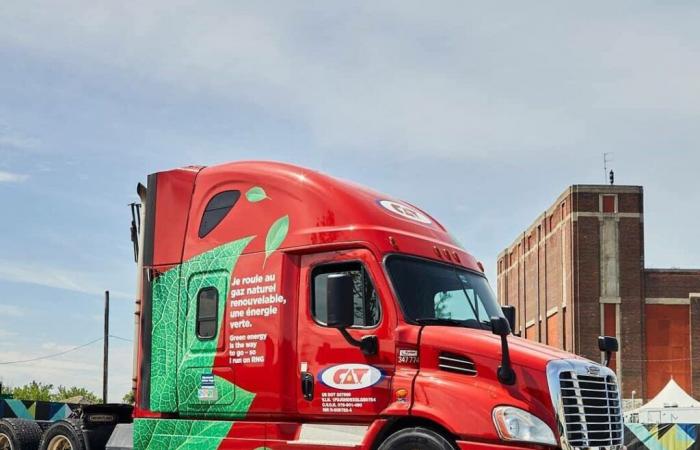As the trucking industry begins its transition to carbon neutrality, readily available and easy-to-implement technologies can help it move closer to this goal.
Take the example of natural gas. A fleet of vehicles running on renewable natural gas can even be carbon negative today, since the fuel is created from methane that would otherwise be released into the atmosphere.
“Fuel is cheaper. It gives fleets the opportunity to reduce their emissions without increasing costs, perhaps even realizing some savings and having the opportunity to generate carbon credits,” said Bruce Winchester, executive director of the Canadian Alliance for natural gas vehicles. He was speaking at a panel discussion on green technologies at Truck World on April 19. “None of the other technologies really offer that.”
Natural gas has seen renewed interest since Cummins announced plans to market a 15-liter natural gas engine, better able to meet the power demands of Canadian industry than the current 12-liter engine. .
15 liter CNG engine
“The 12-litre product that Cummins had on the market wasn’t quite up to par,” added Mr Winchester. “The X15N is definitely better. Its performance is very, very close to that of a diesel engine and we are starting to hear how excellent this engine is.”
CAT is one of the first Canadian fleets to use the new 15 liter natural gas engine. It had already deployed around a hundred trucks equipped with a 12-liter engine.
“The performance of the 15-liter is excellent,” said Jonathan Royal, senior director of asset management at CAT. “From what we have seen, the power and torque are comparable to diesel engines.”
In addition to providing more power, fuel efficiency is equal to that of its little brother, Mr. Royal pointed out, and oil change intervals have been almost doubled. CAT runs its natural gas trucks between Quebec City and Laredo, Texas. She worked with a gas supplier to ensure a refueling network was in place along this route.
Simple refueling
The biggest equipment challenge is meeting maintenance schedules. “You have to be careful,” warned Jonathan Royal, emphasizing that natural gas engines are less tolerant when scheduled maintenance is not respected. “If you do that, these trucks are very capable.”
Refueling the trucks is simple and, adds Mr. Royal, “the biggest advantage is that when you arrive at the station, there is often no queue. You can refuel immediately. There is no smell. There are no leaks on the boots and gloves. Just take the gun and hang it on the tank.”
Kyle Cooper, business development manager for carbon-neutral transportation solutions at Enbridge, also sees increased interest in natural gas as a truck fuel. According to him, the launch of the 15 liter Cummins is “a strong signal sent to the industry: we are here to stay, we have invested in this technology and we see natural gas as a solution of the future for the decarbonization of the ‘industry.”
When powered by renewable natural gas, the trucks actually act as “carbon sinks,” Winchester said. However, it acknowledges that there are tailpipe emissions, even if overall carbon output is negative. Conversion to natural gas allows fleets to generate carbon credits which can then be sold.
Mr. Royal, however, recognizes that the price of RNG is high. “In today’s world, RNG is quite expensive. But it makes perfect sense, at least for the next decade.”
The additional cost of RNG comes from the process necessary to give it the required purity. It is then mixed with conventional natural gas in the pipeline, Cooper said. At the molecular level, RNG works in exactly the same way as conventional natural gas.
Adapt the workshops
Asked what fleets need to know about converting to natural gas, Royal said, “It’s a project in itself. You have to think about not only buying the truck and specifying it correctly, but also specifying the right tanks. What are your routes? Is there good assistance on the road? Is there an adequate supply network to serve your routes? Technicians and drivers must be trained. You really have to plan and calculate the return on investment… all the variables must be taken into account before embarking on this new adventure.”
Existing workshops may need to be redeveloped and their ventilation systems adapted. Gas heating should be avoided and even the electrical pipes may need to be adapted. This work can be inexpensive in the case of a new construction, but expensive in the case of the modernization of an existing workshop.
“If you do it right, it’s a technology that works and is proven,” Mr. Royal said. “CNG and RNG are the only alternative energies available on the market that we can apply now.”






